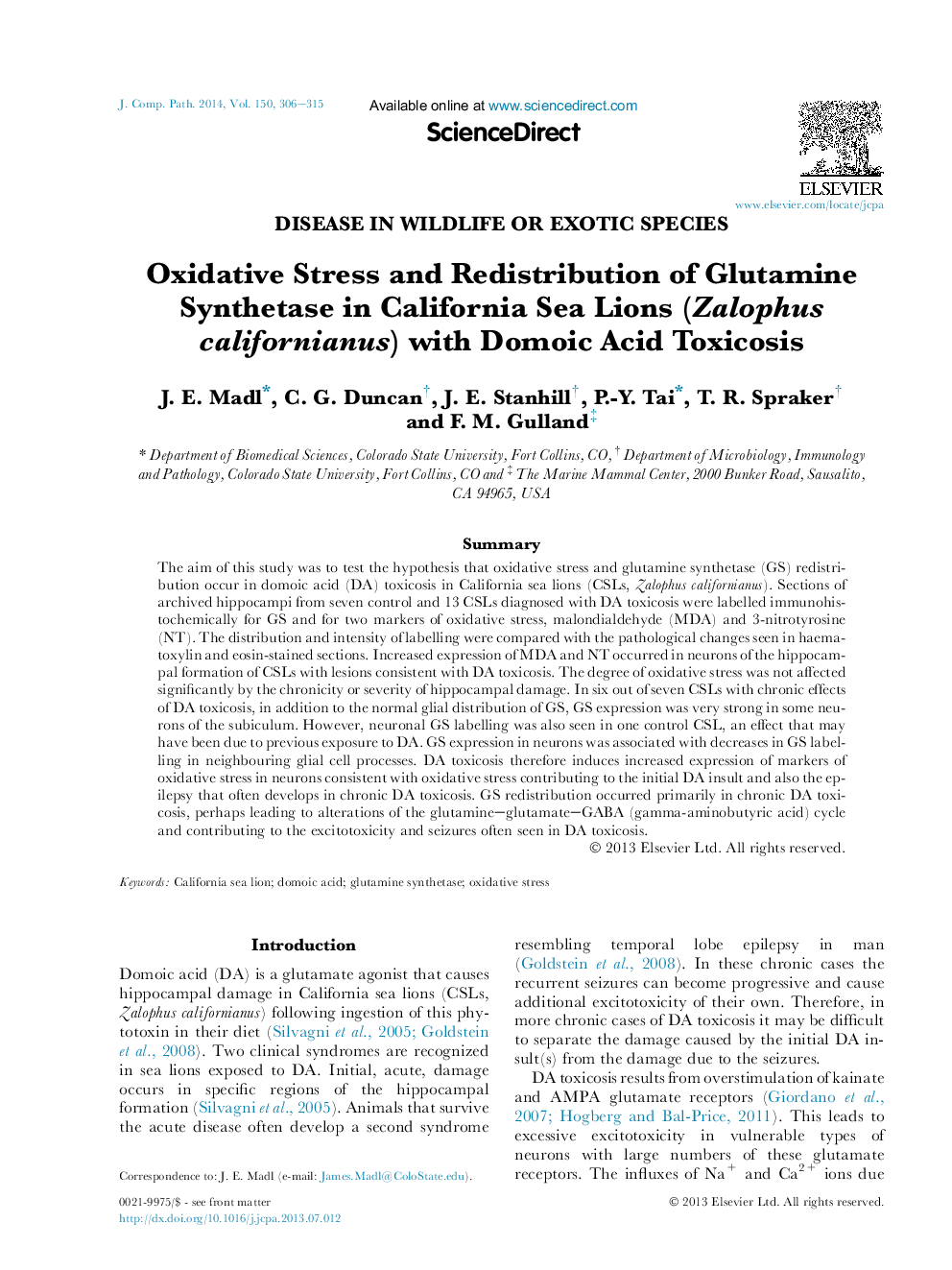| Article ID | Journal | Published Year | Pages | File Type |
|---|---|---|---|---|
| 8500741 | Journal of Comparative Pathology | 2014 | 10 Pages |
Abstract
The aim of this study was to test the hypothesis that oxidative stress and glutamine synthetase (GS) redistribution occur in domoic acid (DA) toxicosis in California sea lions (CSLs, Zalophus californianus). Sections of archived hippocampi from seven control and 13 CSLs diagnosed with DA toxicosis were labelled immunohistochemically for GS and for two markers of oxidative stress, malondialdehyde (MDA) and 3-nitrotyrosine (NT). The distribution and intensity of labelling were compared with the pathological changes seen in haematoxylin and eosin-stained sections. Increased expression of MDA and NT occurred in neurons of the hippocampal formation of CSLs with lesions consistent with DA toxicosis. The degree of oxidative stress was not affected significantly by the chronicity or severity of hippocampal damage. In six out of seven CSLs with chronic effects of DA toxicosis, in addition to the normal glial distribution of GS, GS expression was very strong in some neurons of the subiculum. However, neuronal GS labelling was also seen in one control CSL, an effect that may have been due to previous exposure to DA. GS expression in neurons was associated with decreases in GS labelling in neighbouring glial cell processes. DA toxicosis therefore induces increased expression of markers of oxidative stress in neurons consistent with oxidative stress contributing to the initial DA insult and also the epilepsy that often develops in chronic DA toxicosis. GS redistribution occurred primarily in chronic DA toxicosis, perhaps leading to alterations of the glutamine-glutamate-GABA (gamma-aminobutyric acid) cycle and contributing to the excitotoxicity and seizures often seen in DA toxicosis.
Related Topics
Life Sciences
Agricultural and Biological Sciences
Animal Science and Zoology
Authors
J.E. Madl, C.G. Duncan, J.E. Stanhill, P.-Y. Tai, T.R. Spraker, F.M. Gulland,
